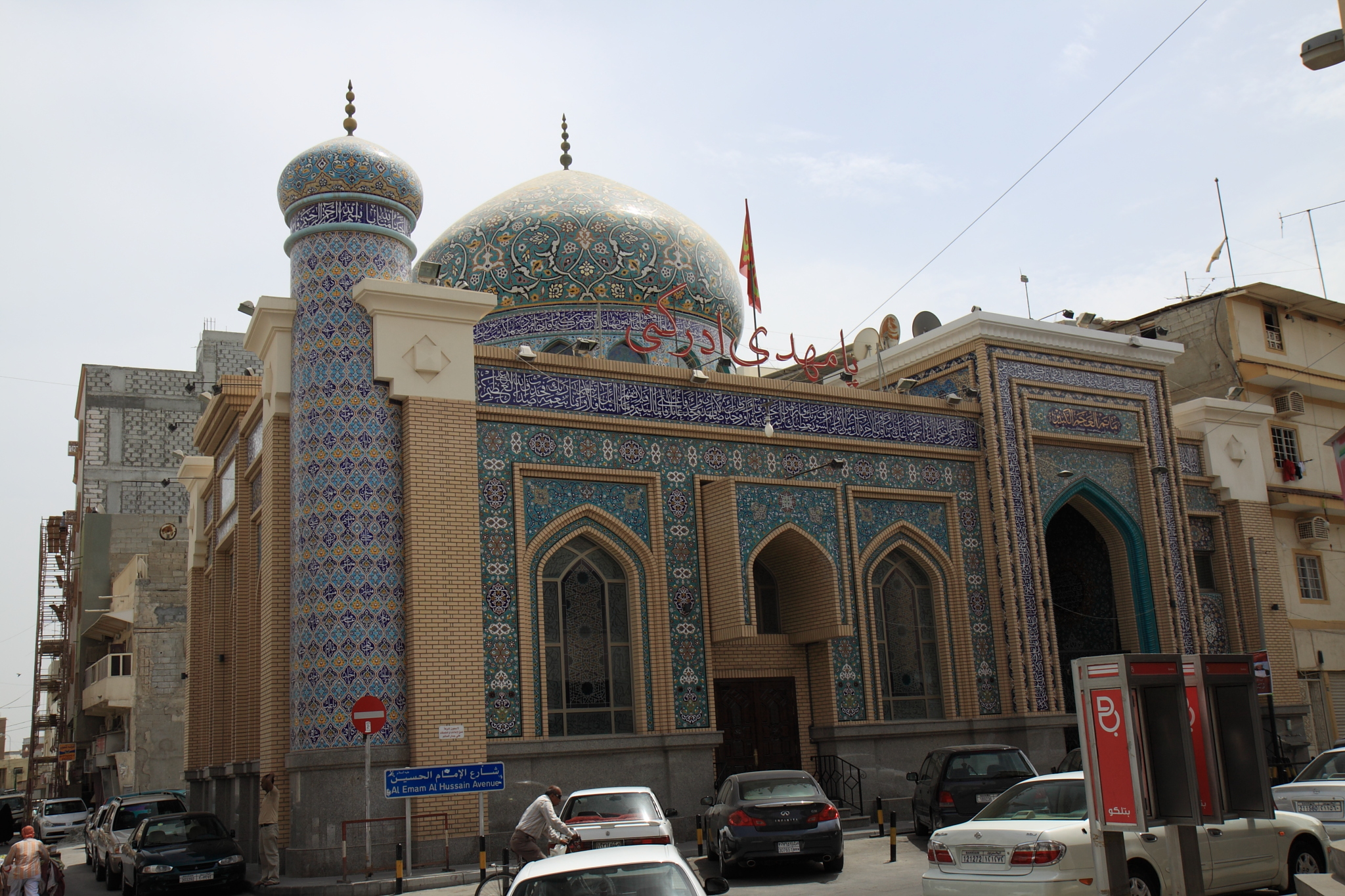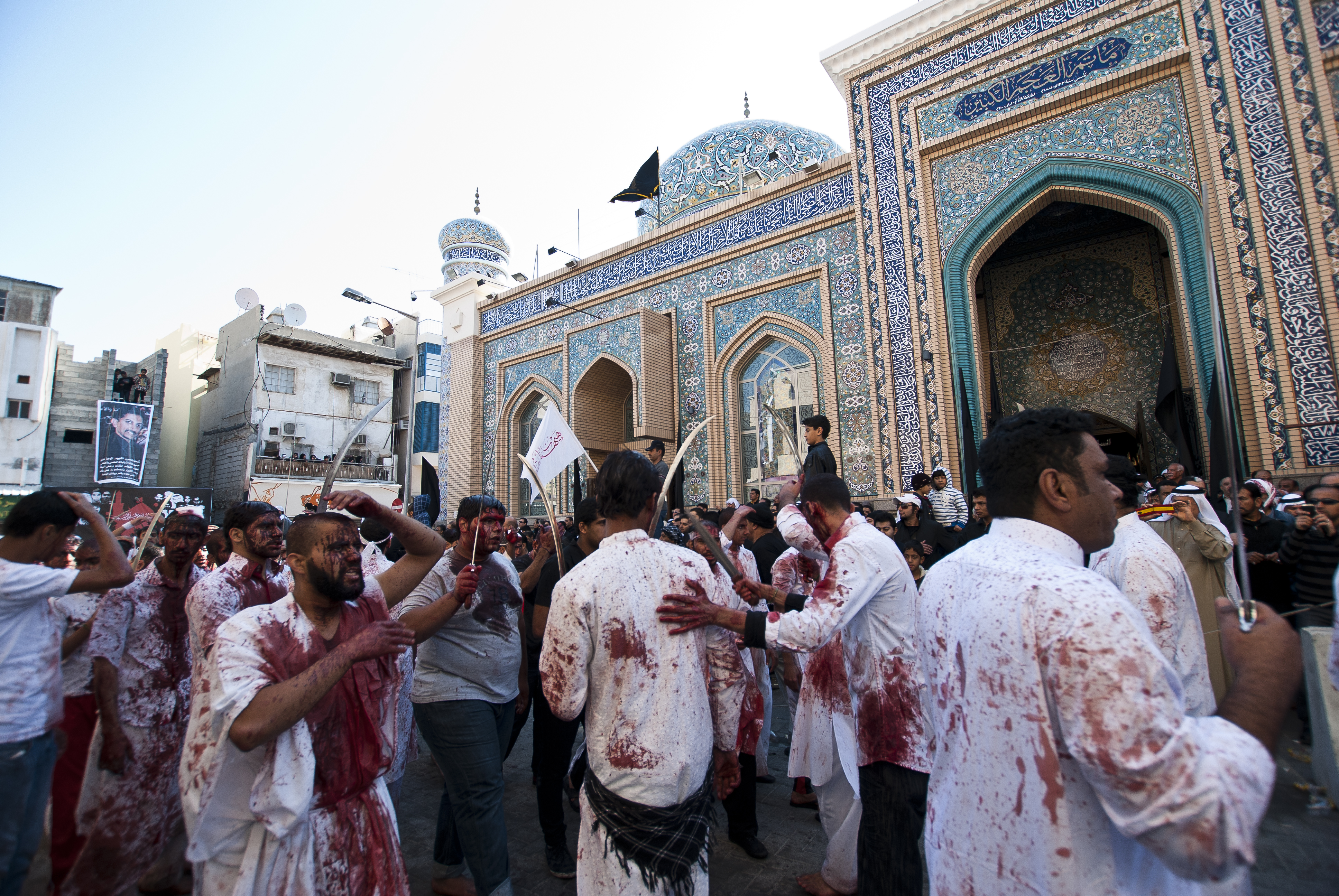
Matam (Imambara)Al Ajam Al Kabeer -Bahrain
Dr.Mazhar Naqvi
Bahrain is rightly called as Karbala of
Gulf. Tens of thousands of Imamis visit Bahrain during ‘Ashura’
and ‘Arbaeen’ to perform their religious rituals freely. They flock to Bahrain as
it is the only Gulf country that allows Imamis to observe Azadari rituals openly.
The history of the first outdoor Muharram procession dates back to 1891 under
the leadership of Mirza
Muhammad Ismail who was based in Bahrain as agent for the British India steam
Navigation Company.
Historian Nelida
Fuccardoe has recorded the historic occasion in these words :” This was a momentous
event for Manama. People flocked behind a heavily armed Mirza Ismail who
proudly made his way through Manama's streets in defiance of the veto imposed
by the rulers on public manifestations of Imami devotion. Manama is the capital city
of Bahrain with a diverse population.Since then, Muharram processions are being
taken out freely with government even now donating funds and food for ‘Matams’
during Ayam-e-Aza(Period of mourning for Imam Hussain and his companions).In
Bahrain, Matam is the name given to congregation halls that are known as
Imambara, Ashurkhana or Hussainia in other parts of the world. They hold mourning
assemblies to commemorate the martyrdom of Imam Hussain at Karbala in 680
AD to save Islam from tyrant Umayyad ruler Yazid.

Matam with Swords in Bahrain
It is widely believed that over 5,000
Matams both registered and unregistered exist in Bahrain. The oldest and distinguished
Matams in Bahrain are located in central Manama. Of these, Al-Ajam Al-Kabeer
is the first Persian Matam and
the largest in Bahrain. Established by Ali Kazim Bushehri, a rich Persian
merchant an immigrant from Iran, Matam Al Kabir has been successfully fulfilling
the purpose behind its construction. In his lifetime, Al Kazim himself
initiated processions, collected donations to invite Zakirs (orators) and hold
commemoration ceremonies and the traditions introduced by him still continues. Other
notable Azadari centers are Matam Bin Rajab, Bin Zabar, Madan, Sallum, Al
Mudaifa, Al Arrayed, Al Qassab, and Al Hajj Khalaf.
Most of Matams owe their existence to
Iranians. Many Iranians had left their motherland in early 20th
century to escape certain what they termed as un-Islamic law introduced by king
Raza Shah. They arrived in Bahrain from Bushere between 1920 and 1940.It was
the shortest 18 hour route by boat to be in Bahrain. Their arrival added more
grandeur to Muharram rituals. Number of Matams also increased considerably as
most of them flourished as merchants and contributed generously to give fillip
to Azadari. Initially, they settled in Manama but moved to neighboring towns
with the traditions of Azadari with them. As a result, entire country witnesses
huge crowd of devotees moving in processions, flagellating themselves with
chain and knives and lamenting for Imam Hussain as their several million counterparts
do after marching to Karbala, especially during Arbaeen to attend ‘Chehlum
of Imam Mazloom’.(References available on request. Photo Courtesy-Google Image).
No comments:
Post a Comment